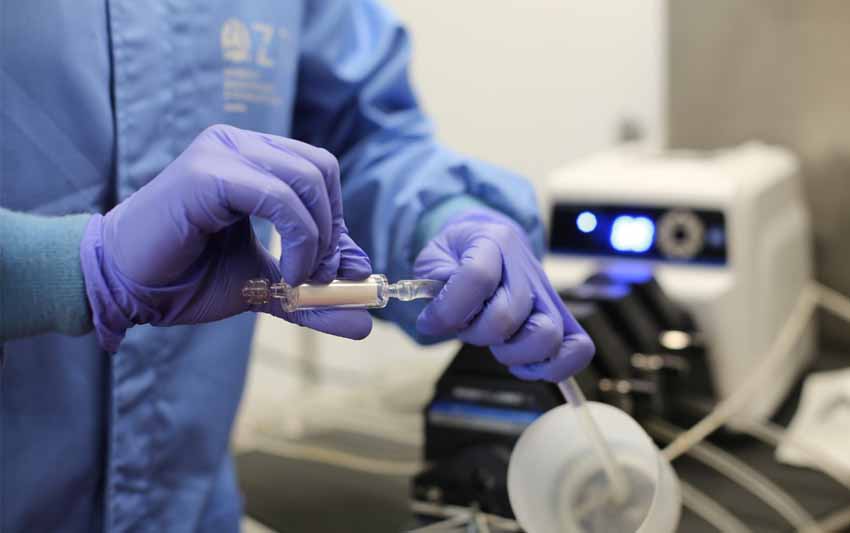Genetics as a new technology for stock management
Últimas noticias
Una mirada LGTBIQ+ al reino animal
Circular Economy in Action: Valorisation of By-products through Projects like PRIMA NEWFEED
Strategic Perspectives: Highlights from the Food4Future World Summit for Business Leaders
Naiara Rodríguez-Ezpeleta, researcher and marine genetics expert
The last two decades have seen an unprecedented genetic revolution that has radically changed our ability to better quantify genetic diversity, understand connectivity between populations, identify environmental adaptations and define species-environment interactions. In addition, the continued development and democratisation of new DNA sequencing technologies has provided us with tools to obtain information on biological processes and ecosystem interactions that are key to the development of conservation and sustainable species management policies.
Fisheries management is no exception to this revolution, but there is a sense among fisheries scientists that the potential of genetic techniques to contribute to sustainable fisheries management based on an ecosystem approach is not being fully exploited. In fact, while many studies support the validity of genetic analysis in providing important information such as the connectivity between stocks and their biomass, they also show a reluctance to use it in management and significant logistical barriers. For this reason, organisations such as the International Commission for the Exploration of the Sea (ICES), the International Commission for the Conservation of Atlantic Tunas (ICCAT) and the European Commission’s Directorate-General for Maritime Affairs and Fisheries are calling for action to lay the foundations for the effective integration of genetics as a key technology for achieving sustainable fisheries management based on an ecosystem approach.
Índice de contenidos
Genetics for stock identification and delimitation
One of the most direct and mature applications of genetics to fisheries management is the delineation and identification of management units or stocks. Stocks are the units of resource assessment on which the development of management measures to ensure maximum sustainable productivity is based. This assessment assumes that each stock represents a population within a species whose intrinsic parameters (growth, recruitment, mortality, etc.) do not depend on rates of immigration from or emigration to other stocks. Ideally, therefore, fish stocks should represent demographically and genetically connected natural populations, i.e. groups of individuals that reproduce sexually and share a gene pool. However, there are many stocks that do not correspond to natural populations, either because they are defined according to political or administrative considerations, because of a lack of knowledge about their connectivity and/or because of a lack of tools to assign individuals to the appropriate stock.

A genetic birth certificate for bluefin tuna stock management
An example of the usefulness of genetics for stock delineation and identification is bluefin tuna (Thunnus thynnus). Until recently, this species was assessed by considering two stocks separated by the 45W meridian, assuming that individuals caught on either side originated from the western (mainly Gulf of Mexico) and eastern (Mediterranean) spawning grounds, respectively. However, although genetic differentiation between the two spawning areas has been demonstrated, it is known that tuna can cross the Atlantic several times in their lifetime, which means that catches outside the spawning areas are made up of individuals from both stocks. As part of the biological studies funded by the Great Atlantic Bluefin Tuna Project (GBYP), the AZTI team has developed a genetic method that can identify the birthplace of an Atlantic bluefin tuna from a small sample of muscle or fin, regardless of where it was caught. The results of assigning each individual to its appropriate genetic stock are used by ICCAT to improve the management of the species, avoiding the potential for biased advice that fails to protect the most vulnerable western stock or ensure maximum sustainable productivity in the eastern stock.
New challenges and emerging applications
In addition to the case of bluefin tuna, numerous studies support the potential of genetic techniques for stock delineation and identification, and many of these are already included in the comparative assessment processes of the ICES benchmarks. However, incorporating genetic monitoring into scientific surveys or on-board or in-port sampling poses logistical complications in terms of sample and data storage, standardisation of sampling protocols and data generation and analysis. These new challenges will require reforms in data collection frameworks and institutional capacity building, but once resolved they will not only consolidate the use of genetic techniques for stock delineation and identification, but also lay the groundwork for new emerging genetic applications with great potential. These include the close kin recapture method (CKMR) for calculating spawning stock biomass, environmental DNA for estimating biomass, diversity and species distribution, epigenetics for determining age, or the identification of genetic markers indicating environmental adaptation.
This article was originally published in Ruta Pesquera







